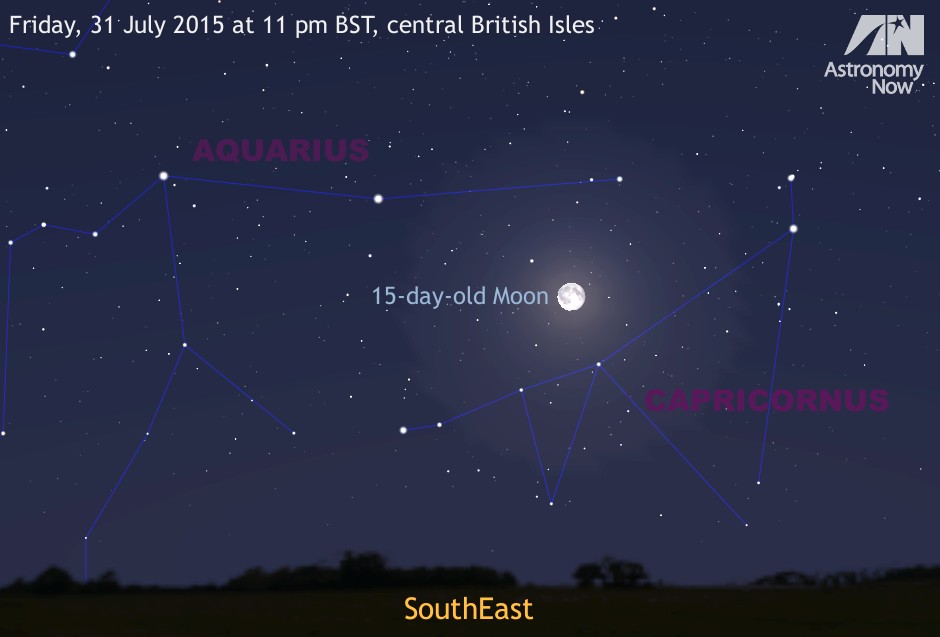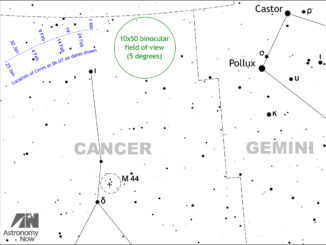
The volcanic eruption of Krakatoa in 1883 led to Blue Moons, as did the eruption of El Chichón in Mexico in 1983. Widespread forest fires in Canada during September 1950 also produced particles of just the right size to scatter longer wavelengths of light for Blue Suns as well as Blue Moons to be seen as far away as the UK.
Traditionally, the name Blue Moon was given to the third of four full Moons in a single astronomical season (meaning Blue Moons will occur on 21 May 2016, 18 May 2019 and 22 August 2021), but largely due to the US radio program StarDate in early 1980 and the board game Trivial Pursuit, people have come to use the term Blue Moon to mean the second of two full Moons occurring in a single calendar month.
Full Moons occur every 29.530589 days, on average, which is the lunar synodic period. Since most months are 30 or 31 days long, it’s clearly possible for two full Moons to fit in a single month if the first occurs near the beginning. Since the first full Moon of July 2015 arrived at 3:20am BST on the 2nd, the second full Moon squeezes in at 11:43am BST on July 31st.
So, according to the second-full-Moon-in-a-month definition of a Blue Moon, just how often do they occur? If you have a few hours to devote to the task, you can use our online Almanac to generate lunar phases for any calendar date between 1600 and 2400 CE. To spare you the effort for the 21st century, here are the statistics:
Between the years 2001 and 2099, there are 41 Blue Moons. There are three years in which a Blue Moon occurs twice: 2018 (January and March), 2037 (January and March) and 2094 (January and April). Blue Moons can also occur on consecutive years: 2066 and 2067. (Note: these are all UTC timings; the number of events in other time zones will vary considerably.)
So, at least in one sense, if the weather is favourable in the British Isles around 10pm BST on Friday, 31 July, you will see a Blue Moon rising in the east-southeast. And if you’re clouded out, console yourself with the thought that you get two opportunities to see the next in 2018!



